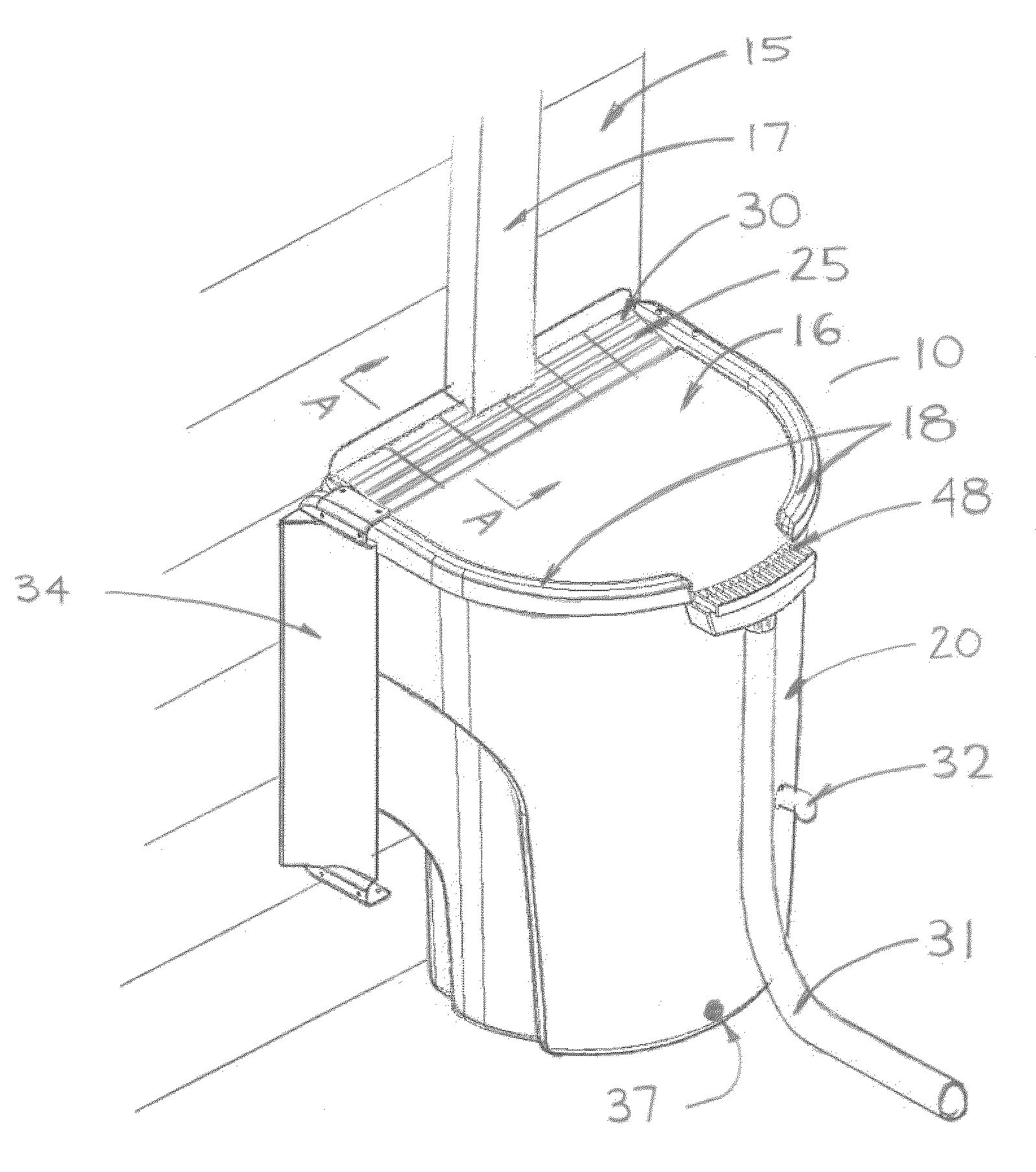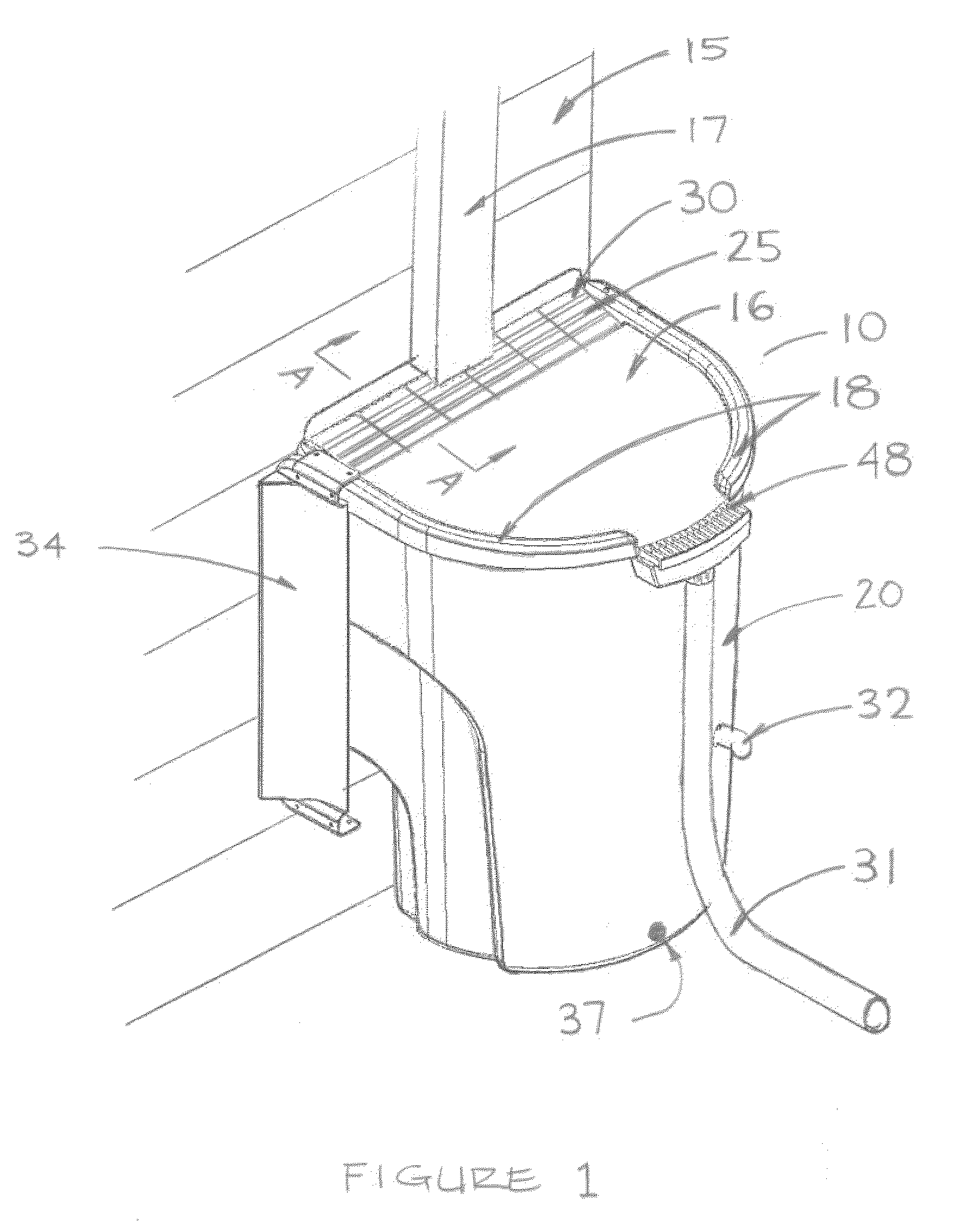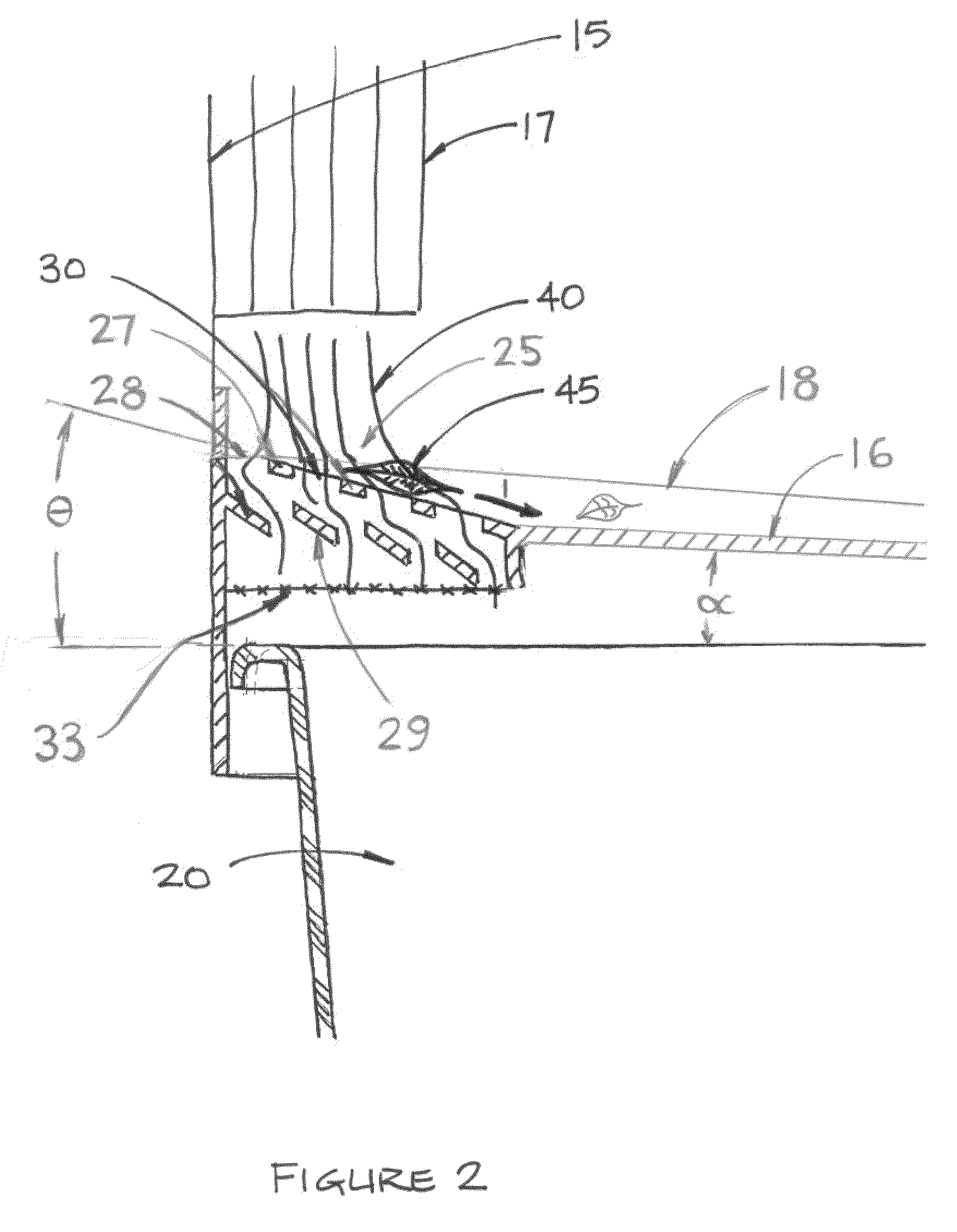Water harvesting device
a water harvesting device and water storage technology, applied in the direction of sewage draining, rigid containers, liquid fuel feeders, etc., can solve the problems of ineffective water collection or even back-up of water toward the building structure, time-consuming maintenance for users, and insufficiently meeting the rising needs of the public. , to achieve the effect of reducing user maintenance, enhancing protection, and maintaining water collection capacity
- Summary
- Abstract
- Description
- Claims
- Application Information
AI Technical Summary
Benefits of technology
Problems solved by technology
Method used
Image
Examples
Embodiment Construction
[0030]Turning now descriptively to the drawings, in which a preferred embodiment is shown in the various configurations to describe the invention. It will be understood that while the invention is described with respect to a preferred embodiment the device may be configured differently while achieving the essence of the invention.
[0031]FIG. 1 illustrates a preferred embodiment, a rain water harvesting device 10 in an installed position. The rainwater harvesting device 10 is shown adjacent to a wall 15 of a residential building. The wall 15 is shown with a downspout 17 attached to it and represents one typical configuration prepared for use with a rainwater harvest device. Rainwater that is collected from building structures are collected using eaves (not shown), the water then enters into the downspout 17. The downspout 17 is positioned above the rainwater harvest device 10 such that the water exiting the downspout 17 spills onto the rainwater harvest device 10. For basic operation ...
PUM
| Property | Measurement | Unit |
|---|---|---|
| area | aaaaa | aaaaa |
| water entry area | aaaaa | aaaaa |
| time | aaaaa | aaaaa |
Abstract
Description
Claims
Application Information
 Login to View More
Login to View More - R&D
- Intellectual Property
- Life Sciences
- Materials
- Tech Scout
- Unparalleled Data Quality
- Higher Quality Content
- 60% Fewer Hallucinations
Browse by: Latest US Patents, China's latest patents, Technical Efficacy Thesaurus, Application Domain, Technology Topic, Popular Technical Reports.
© 2025 PatSnap. All rights reserved.Legal|Privacy policy|Modern Slavery Act Transparency Statement|Sitemap|About US| Contact US: help@patsnap.com



